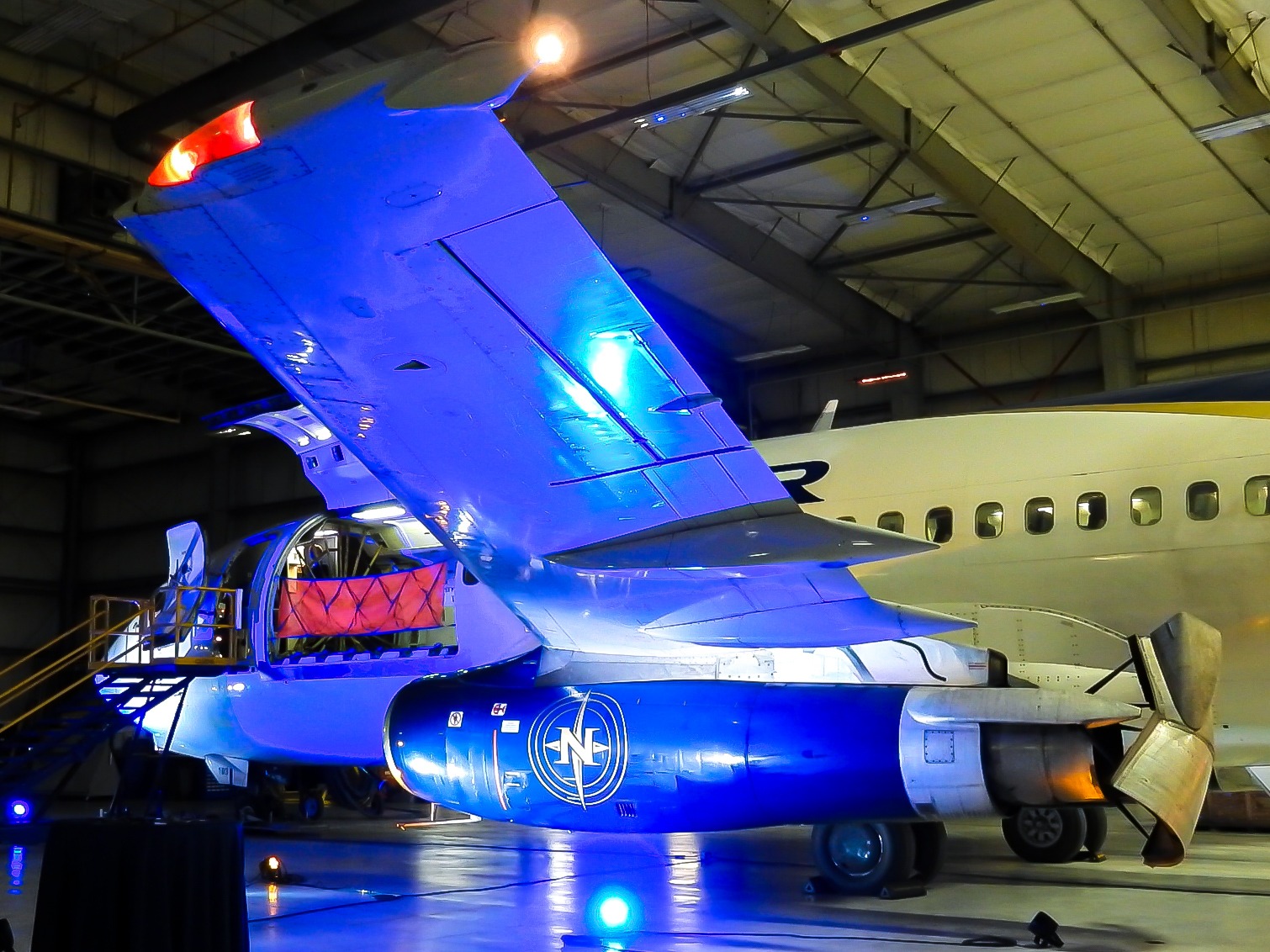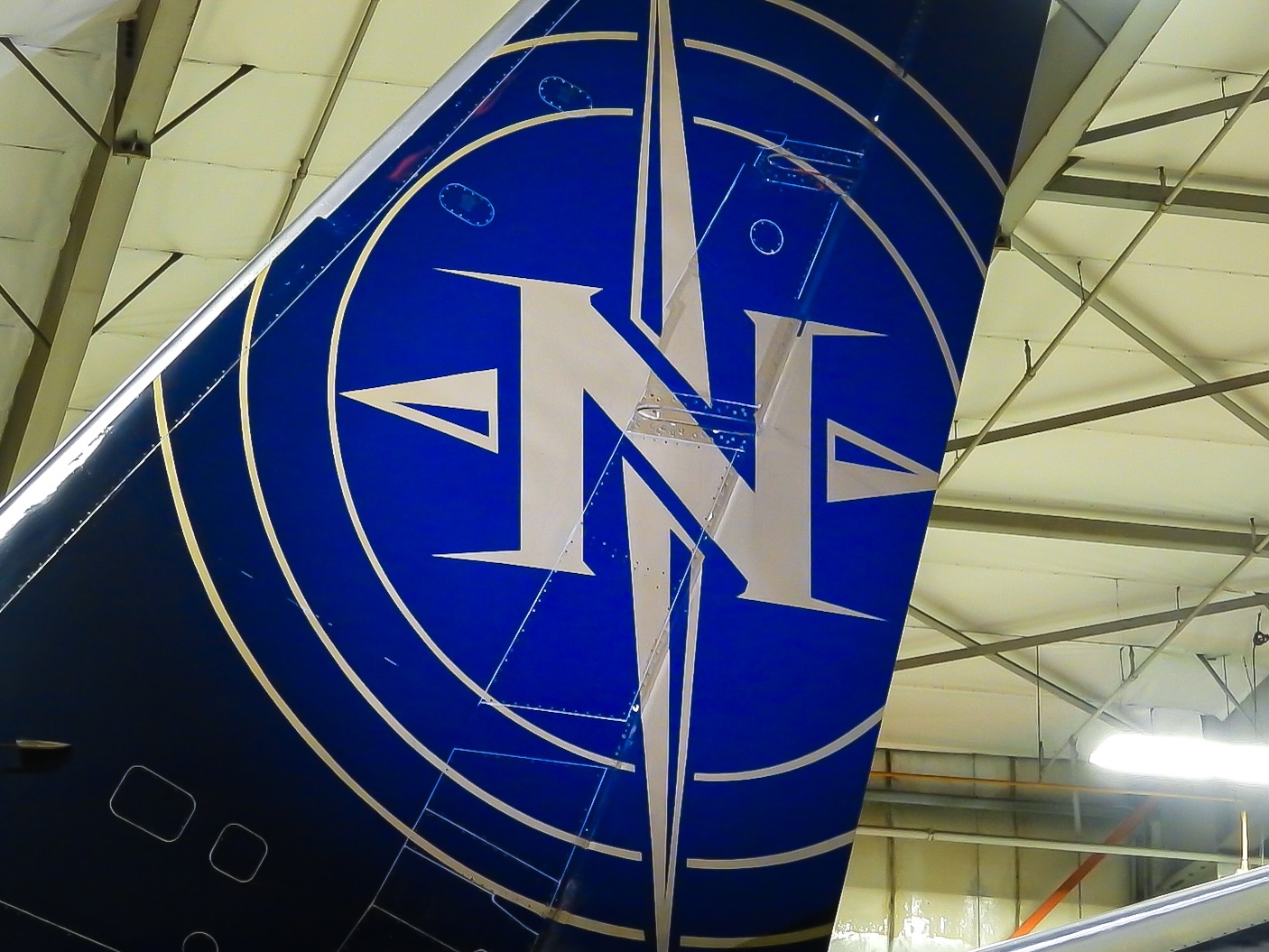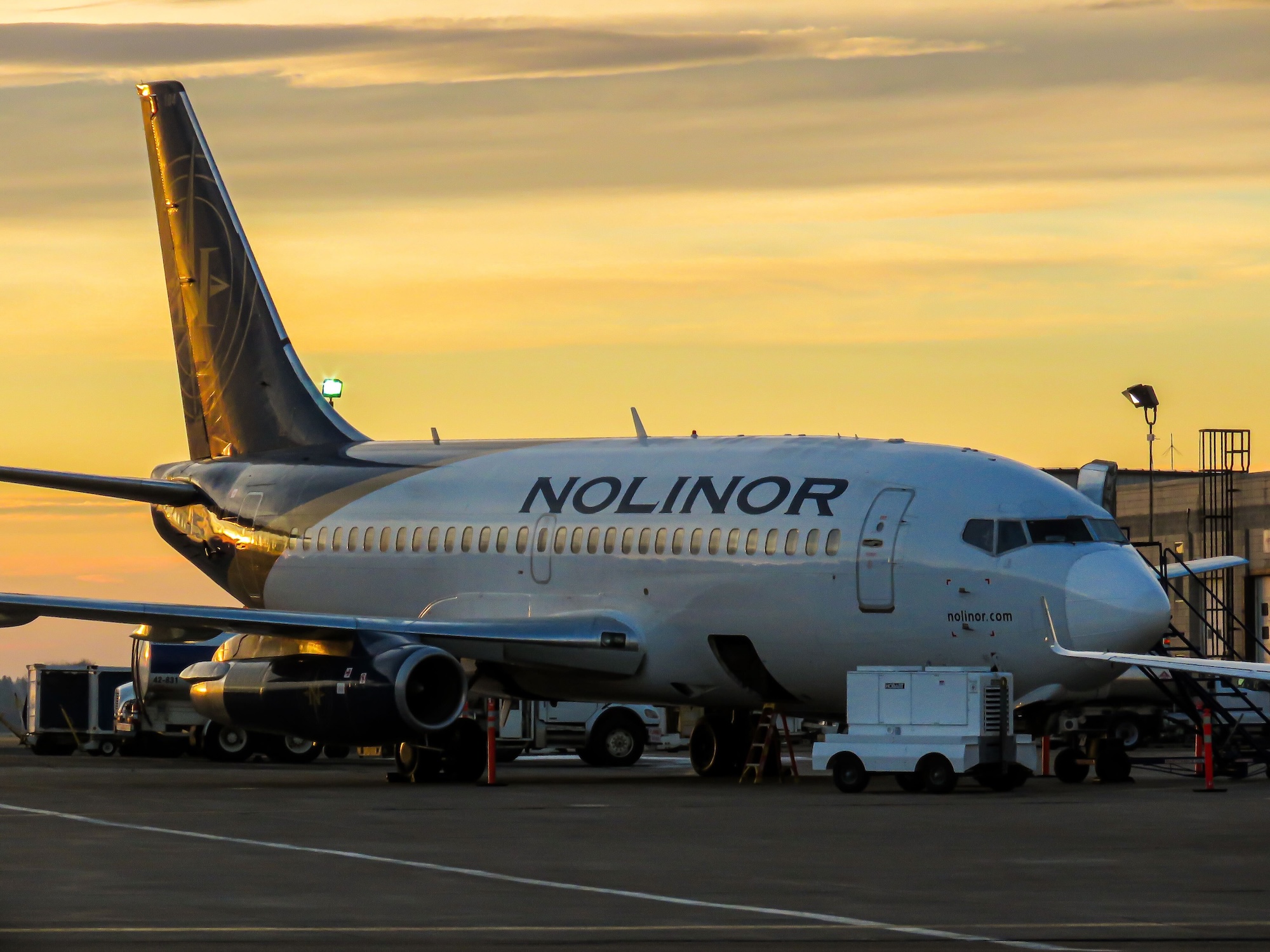Edmonton — This November, Nolinor Aviation (N5) celebrated one year at its new operating base in Edmonton, Alberta (YEG).
Since then, the base continues to grow. In just 12 months, it grew from just a single charter flight per week to a permanent private terminal and maintenance line, flights nearly every day of the week up to the Northwest Territories and Nunavut, and now the addition of a second 737-200.
To mark the anniversary, Nolinor Aviation invited industry professionals, journalists, and even members of the public to its new FBO and Hangar. The opportunity allowed me to speak with Vincent Dufort, Sales Director at Nolinor, about their presence and future at YEG.
But before we get to the interview, let's get some context.

About the Base
B2Gold Corporation, a Canadian mining company based in Vancouver, is the primary client for Nolinor’s Edmonton operations. Their logo could be found on the welcome sign into the terminal, on every cabin seat cover, and even on the side of C-GTUK, the 737-200C based there, for a time, though the sticker had been removed before the event.
B2Gold is a relatively new entrant into the mining sector in Canada, already operating mines in Africa and the Philippines. In June of this year, they officially opened a mine in Goose Lake, Nunavut, ~765 nautical miles north-northeast of Edmonton.
The facility currently consists of the open-pit mine itself, an accommodation complex, and Goose Lake Aerodrome, a single-runway gravel airfield wholly owned by B2Gold. The company also operates a marine laydown area north of the mine at Bathurst Inlet, typically operational during the months leading up to the inlet freezing over in the Fall to bring in heavy machinery, materials, and fuel needed to operate the mine through the winter and into the spring.

Nolinor Aviation began operations at YEG to support the mine’s development in June 2024, stationing one Boeing 737-200C (Combi) to operate up to Goose Lake direct from Edmonton or via Yellowknife (YZF). It started with a single weekly flight, eventually growing to flights on all five business days as the operation up north grew and started production last June.
As the year went on, the need for a physical base at YEG grew; thus, Nolinor purchased the 41,600-square-foot hangar and terminal previously owned by fellow charter carrier North Cariboo Air. The watchful eye may still see some elements of NCA’s branding in the building, like the colour palette and the swooshes on the lobby glass dividers, but there was no shortage of blue and gold, with photos of 737-200s on every wall. This is now evidently their Alberta home.
With the facility also came the opportunity to open a third heavy maintenance line, after Montreal-Mirabel’s (YMX) two, allowing multiple aircraft to be based at YEG year-round, which was one of the main talking points of the event.
During the event, C-GTUK was the operational aircraft at YEG and was on display inside the hangar. Meanwhile, C-GNLN had been parked up outside since August, likely for maintenance. The sight will become more common as another 737-200 joins the YEG-based fleet, allowing Nolinor to expand operations and welcome more contracts in the western half of Canada.

The 737-200 Combi
Buffalo Airways also serves Goose Lake with its Lockheed Electras in an all-freighter configuration from Yellowknife, but what makes Nolinor competitive in the region is its Combi capability.

The aircraft we saw on display, C-GTUK, was in a Combi configuration, consisting of 59 seats in the back and cargo space for three pallets forward of that, separated by a movable bulkhead, giving it the flexibility to complete any mission on any given day.
The Combi also features a large cargo door forward of the left wing, allowing full palettes and other large cargo on the main deck, just like any other 737 freighter. The aircraft can accommodate up to 119 passengers, seven pallets, or two fuel bladders of fuel.
There are a few Combi aircraft operating up north, like Canadian North’s ATR42-300(QC) and Air Tindi’s Dash 8-100s and Dash 7s, but none come close to what the 737-200 can do.

Let’s compare. (Data from Canadian North, Air Tindi, and Nolinor)
The 737-200 is the largest civilian aircraft able to land on unpaved surfaces too, made possible by its gravel kit, making it very well suited for serving mining communities in Canada’s northern territories.

Interview
At the event, I spoke with Vincent Dufort, Sales Director at Nolinor, about their presence at YEG, the fleet, and what the future holds for Edmonton and Nolinor as a whole.
Q: First thoughts?
Vincent Dufort: “It's the one-year anniversary for the base, so we're very, very happy to invite everyone here and have some time to talk about, like, you know, real life. No talk about IROPS, no talk about winter or the next flight or Cariboos on the runway. We're here to talk about who we are, who they (employees) are, and to learn about the human behind everyone here.”
How has the Edmonton base been going for you so far?
“Well, it's been a success for us. We came here for one flight per week in June 2024. A few months later, we had five flights a week from Monday to Friday, so it's even better than what we expected.”
How does Edmonton complement your other operating bases?
“As you might know, Nolinor is the largest operator of the 737-200 in the world. So we need space, and we need space to maintain those aircraft. So, Edmonton is the 3rd maintenance line of Nolinor Aviation. It brings us the chance and the capability to work on our aircraft even more and longer, and with more aircraft at the same time.”
What makes Nolinor competitive compared to other operators in the region heading north from Edmonton?
“In Edmonton, the big plus is that the Combi operation is something that is lacking in Alberta. The 737-200, with that big cargo door, the amount of passengers we’re able to fill in, It's the biggest and largest aircraft that can land on gravel with a Combi configuration. There's nothing else on the market comparable to this aircraft. So, bringing the 737 (-200) up north and in Edmonton, it's a big, big plus for all the industries.”
As you say, the Edmonton base has gone very well. What do you think the future holds?
“Well, tonight we'll announce that the 2nd plane is coming to be positioned in Edmonton in 2026. This will bring additional capability and capacity to our clients out west, and especially in the Northwest Territories and Nunavut. We're looking forward to adding more flights to our schedule.
Speaking to the 737-200 fleet, what would the future hold? If more aircraft became available on the market, would you pursue them, or are you looking past the 737-200 for fleet growth?
“We'll buy them all…We have the largest fleet, with aircraft based in Edmonton, in Yellowknife, Mirabel, and it's just the beginning.”
Do you see a return to turboprop operations on the horizon?
“You never know. To be honest, I have no idea what the future holds for us. We always say we accommodate any of our clients' needs. So if one of our clients comes and says we need this kind of aircraft, we'll find a way to purchase this aircraft and operate it for this client.”
What do the next few years and Nolinor hold as a whole?
“We’re looking to grow just like any other company in that world, but especially to grow according to our clients' needs. That’s really the key, and our biggest value at Nolinor is that we try to adapt. We don't want to frame our customers into a specific frame. We want to be open and talk with them, and if they need a specific thing or a specific terminal, Edmonton is one of the best examples. One of our clients decided to have us at least one flight a week, and then grow to 5 flights a week, and we personalized the terminal here in their name and under their colours, and the same thing inside the aircraft. So we're really trying to accommodate them and make them feel personalized and offer the best service to them.”



.webp)
